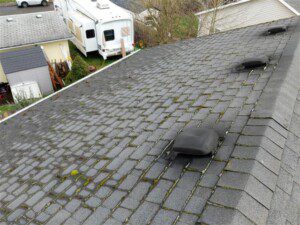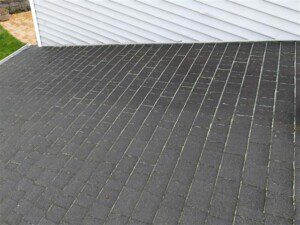
One of the challenges of cleaning roof moss is that it isn’t just about removing the moss, it is also about safely getting to the moss. If you can access the moss from a stable ladder or a flat roof, then you can remove moss fairly easily and cheaply using a broom and a trowel. Just make sure not to scrub too hard; you don’t want to damage the roof. Use the trowel to loosen the moss, and then brush it away with the broom.
If you have a significant amount of moss growth, chemical treatment can be a good solution. Chemicals kill small moss spores that may not see when cleaning with a trowel and brush, as well as any moss that is in more hard-to-reach areas. When using any chemicals, you need to protect yourself, any outdoor furniture, and any vegetation that may get chemicals on it. You should also consider the environmental impact of using chemical treatment. You should also remember that dead moss will still need to be cleaned off of the roof. It usually takes about one week for the chemicals to kill the moss.

A liquid moss killer comes in a bottle that attaches to a garden hose. The chemical blends into the water as the water flows. Liquid moss killers cover the roof more evenly than dry powders, and you may be able to apply the chemical from the ground. Be careful with spraying in windy conditions because the spray may go where you don’t want it to.
Dry Power Moss Killer
A dry powder moss killer is applied by sprinkling the powder in lines that are parallel to the roof ridge. Typically, the lines are spaced about 2 to 4 feet apart. When it rains, the rain will combine with the powder and run down the roof toward the eaves. This spreads the chemical over the roof. Moss-killing powders can be difficult to distribute evenly, and they can leave white streaks on the roof that take a while to go away. A strong wind can also blow the powder off of the roof before it rains.
Most importantly, if you have moss on your roof and you don’t feel safe accessing your roof or removing the moss yourself, don’t take unnecessary risks. Reach out to a handyman or a roofing contractor to do the job for you.
You can find more information about treating moss on a roof here:
